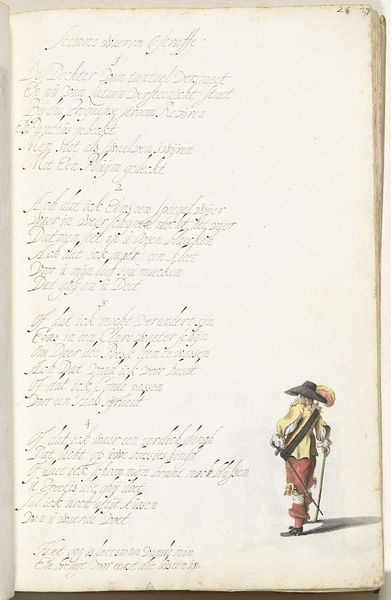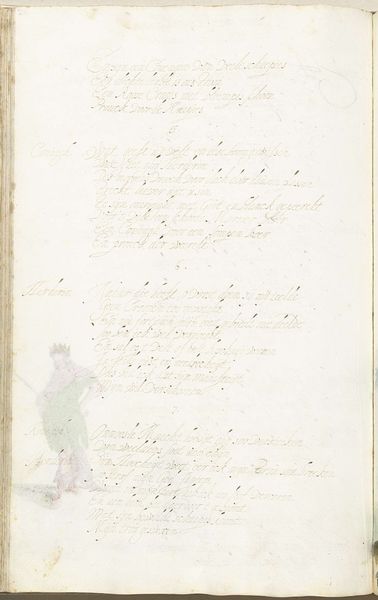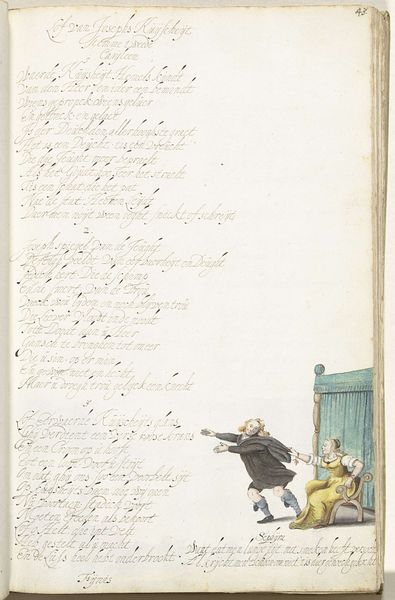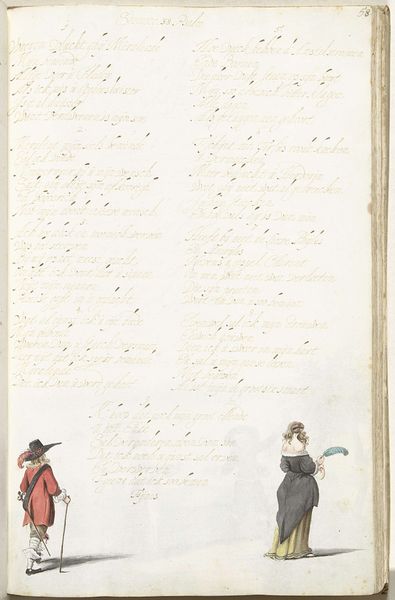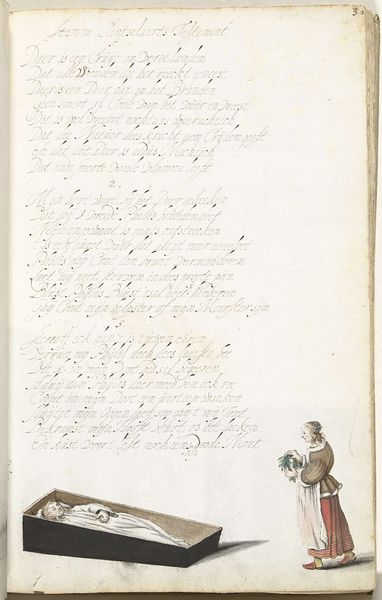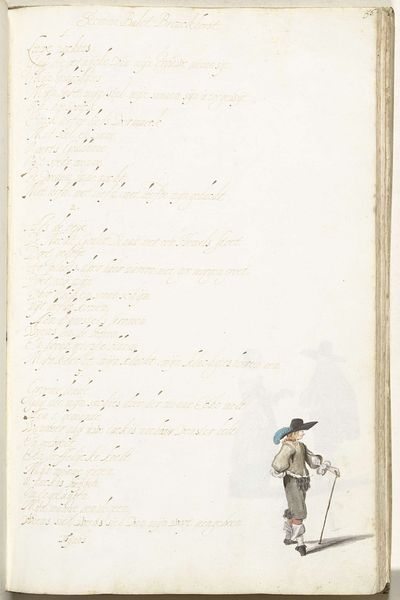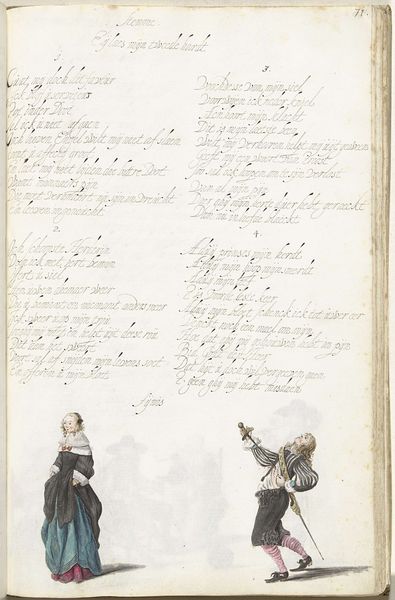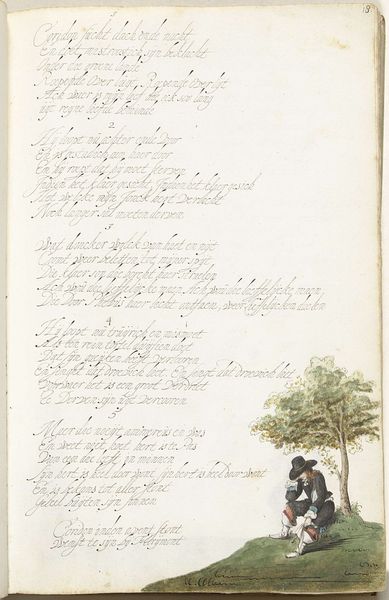
drawing, paper, watercolor, ink, pen
#
portrait
#
drawing
#
water colours
#
dutch-golden-age
#
figuration
#
paper
#
watercolor
#
ink
#
coloured pencil
#
pen
#
watercolour illustration
#
genre-painting
#
watercolor
Dimensions: height 313 mm, width 204 mm
Copyright: Rijks Museum: Open Domain
Curator: The small watercolor drawing titled "Heer en dame," or "Gentleman and Lady," was created by Gesina ter Borch around 1653. You can find it in the Rijksmuseum. What strikes you most about it? Editor: Well, immediately the limited palette and the intimate scale give it a sense of delicacy. It feels very personal, almost like a private communication or reflection. Curator: That's perceptive. Ter Borch worked extensively in watercolors, inks, and pen on paper. Consider the material conditions of artistic production for women artists in the 17th century. The accessibility and relative affordability of these media made it easier for her to pursue her artistic practice within the confines of her domestic sphere. Editor: True. And there is also something revealing about the lines in relation to form. The figures aren’t photorealistic—we're looking more at an impression of a scene, where texture and shape take precedence over lifelike qualities. Look at how the watercolors pool and bleed; her treatment almost looks modern. Curator: Yes, Ter Borch wasn't aiming for strict realism. Genre scenes, particularly those depicting courtship, were popular then. So her choosing to create a couple here tells us that she likely was looking to capture themes circulating at the time within certain segments of Dutch society. Editor: Beyond the societal norms, though, I can't help but wonder about the story implied here. What’s the gentleman offering? And is it well-received? The elegance of the composition evokes the nuance of social performance and emotional exchanges through subtle gestures and coloring, such as their facing each other or their positioning at the very margin of the page as though pushed from view. Curator: Exactly. So, beyond questions of medium and societal context, what else does a close inspection of this intimate drawing tell us about seventeenth-century life in the Netherlands? Editor: Thinking about the construction, form, line, and colour evokes in my mind ideas that have less to do with her context. Instead I'm thinking that this particular tableau’s power might reside not in the story itself, but how it makes us think of our own present encounters today. Curator: An excellent point, by studying both the production conditions and material construction of Ter Borch’s drawing allows us a unique vantage into understanding Dutch art and life today.
Comments
No comments
Be the first to comment and join the conversation on the ultimate creative platform.
